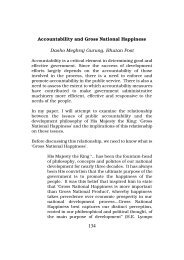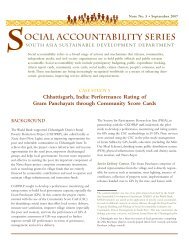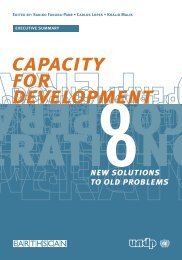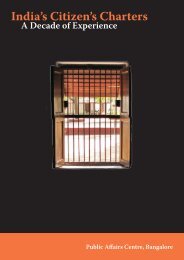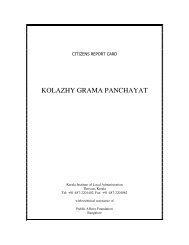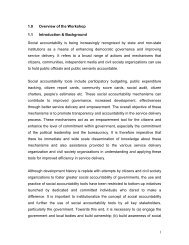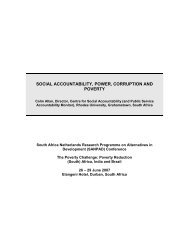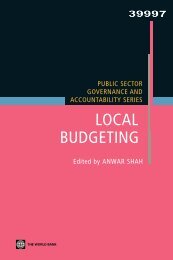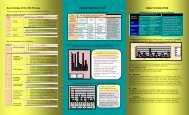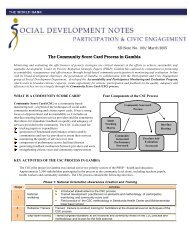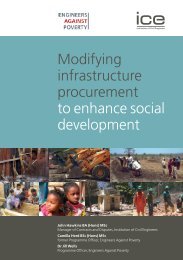Handbook on Citizen Engagement: Beyond Consultation - SASANet
Handbook on Citizen Engagement: Beyond Consultation - SASANet
Handbook on Citizen Engagement: Beyond Consultation - SASANet
- No tags were found...
You also want an ePaper? Increase the reach of your titles
YUMPU automatically turns print PDFs into web optimized ePapers that Google loves.
Chapter V. Engaging Members of Specific Populati<strong>on</strong>sA challenging questi<strong>on</strong> in the field of citizen engagement is how to reach people bey<strong>on</strong>d theusual suspects – those who willingly participate over and over again, attend events, volunteer atnumerous organizati<strong>on</strong>s and whose voices are heard loudly and clearly. Who sits down at thetable is a critical element of citizen engagement. This chapter touches <strong>on</strong> factors surroundingexclusi<strong>on</strong>, which are often unintenti<strong>on</strong>al, of specific populati<strong>on</strong>s from civic participati<strong>on</strong>. Somesuggesti<strong>on</strong>s as to how to overcome these barriers are also presented.It is surprising to recall that it has been less than a century and in some cases even less, sincevarious marginalized populati<strong>on</strong>s were awarded <strong>on</strong>e of the most basic civil liberties – the right tovote. These historical legal barriers reflect discriminati<strong>on</strong> and exclusi<strong>on</strong> from power that is stilllargely at play today.• At the federal level, white women w<strong>on</strong> the right to vote in 1918. They actually got toexercise their new right in 1921. At the provincial level, this occurred between 1916 and1940, when white women also w<strong>on</strong> the right to run for electi<strong>on</strong>s.• Late 1940s: women and men from Chinese, Indian and Japanese origin went to the polls.• 1960: Inuit and Aboriginal men and women, <strong>on</strong> and off reserve, w<strong>on</strong> the right to vote.• At the municipal level, as property determined the right to vote, the less fortunate, includingwomen, the poor, immigrants and minorities were excluded from the polls, in some cases,until late 1960s and early 1970s.These differentials c<strong>on</strong>tribute to <strong>on</strong>going imbalances in ec<strong>on</strong>omic, health and social standing.Marginalizati<strong>on</strong> and discriminati<strong>on</strong> are the result of structures that perpetuate a difference inpower between populati<strong>on</strong>s and are maintained by cultural beliefs that deem this difference inpower to be fair. Exploring this complex subject is bey<strong>on</strong>d the scope of this chapter. Havingacknowledged these historical facts, the next step is to emphasize the fundamental importance ofcitizen engagement and its goal of engaging those who have historically been excluded fromdecisi<strong>on</strong>-making. The aim is to adjust the imbalance of power and to prioritize the needs ofexcluded populati<strong>on</strong>s.The following table attempts to summarize some of the practical barriers, specific to citizenengagement, that impede participati<strong>on</strong> and to offer some potential soluti<strong>on</strong>s and resources. It isworth noting that these obstacles are compounded by bel<strong>on</strong>ging to more than <strong>on</strong>e category ofexclusi<strong>on</strong> (i.e. being a women of colour and living in poverty is much more difficult than simplybeing a woman).14 CANADIAN POLICY RESEARCH NETWORKS




